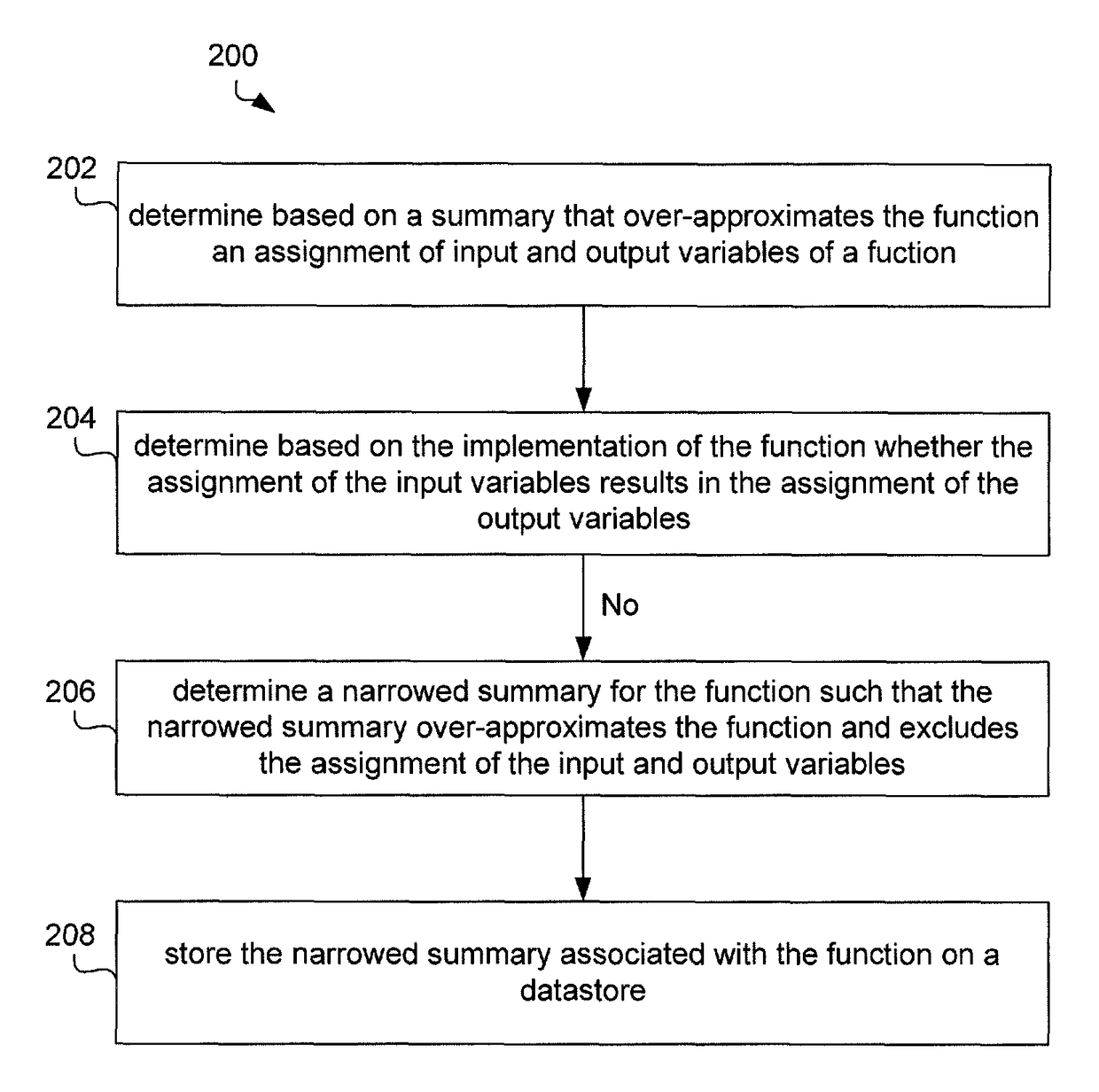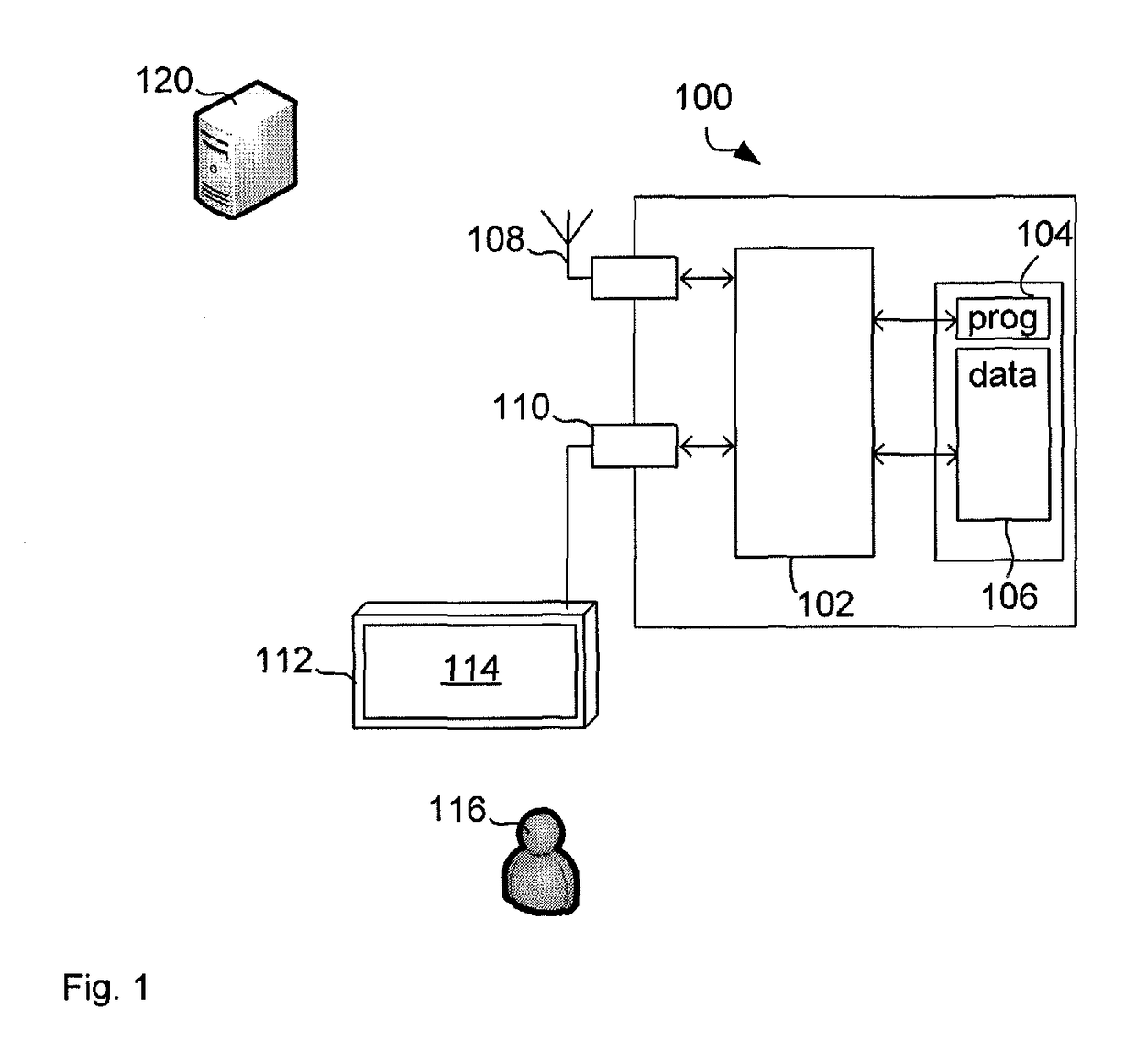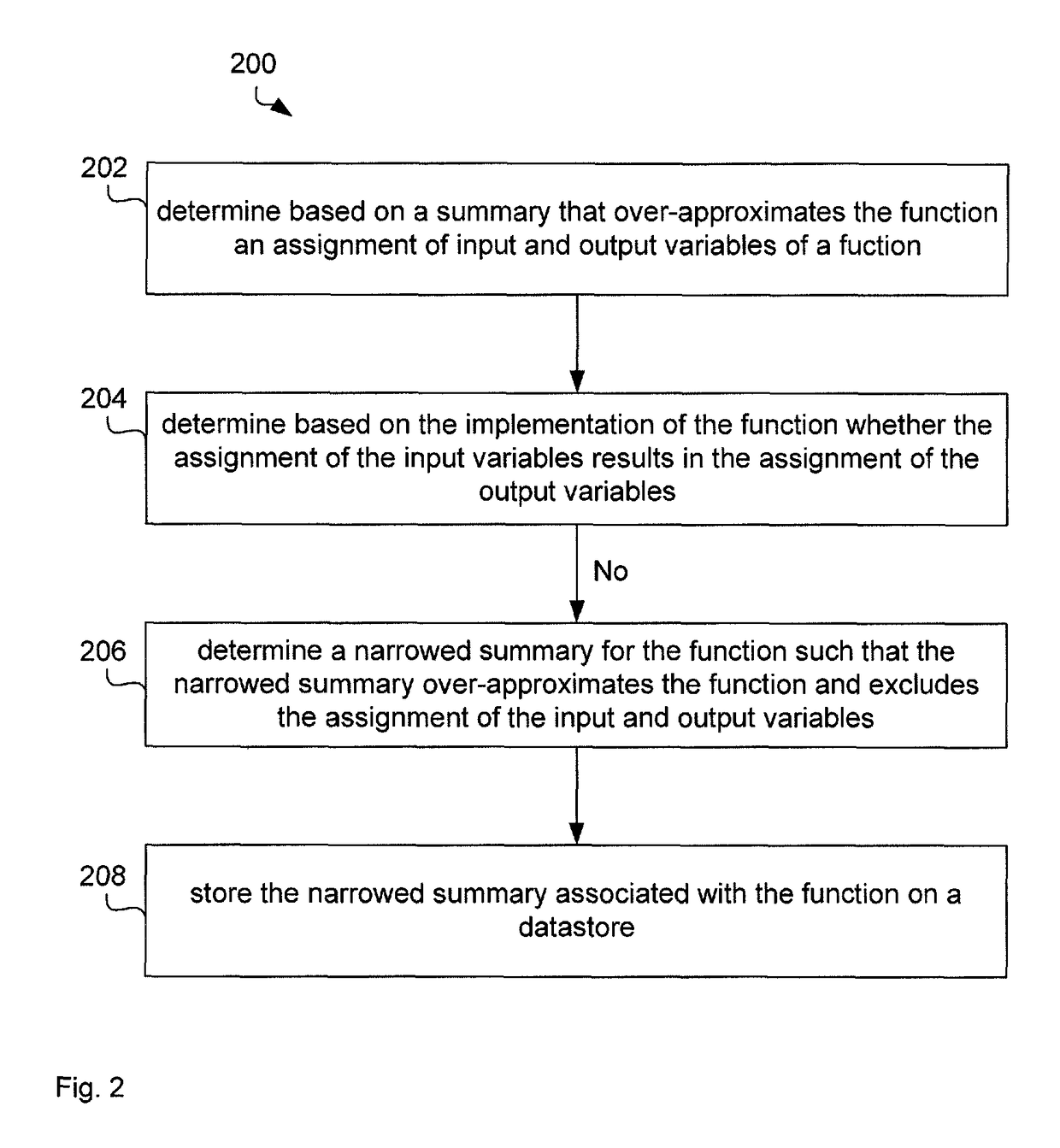Analysis of program code
a program and program code technology, applied in the field of program analysis, can solve the problems of difficult to build a complete monolithic representation of software, unusable analysis, and difficulty in providing developers with feasible inter-procedural counter-examples
- Summary
- Abstract
- Description
- Claims
- Application Information
AI Technical Summary
Benefits of technology
Problems solved by technology
Method used
Image
Examples
example 1
[0195
[0196]Consider program P1 and the function automata A main and A inc given in 1. Let C be the context C(main)=(True,True) and C(inc)=(True,True). The trace t=m>=1•_error,n=inc(1,m)•_error is (_error,_error)-feasible in C:
post(C,m>=1,_error)=_errorm≧1 (1)
post(C,_error,n=inc(1,m,),_errorm≧1)=m≧1True (2)
post(C,_error,m≧1)=m≧1_error (3)
However, it is feasible only because our summary for inc is too coarse.
[0197]C is an over-approximating context (in short over-approximation) if for every function automaton A f, every trace tεL(A f) and every predicate φ, post(t,φ)⊂post(C,t,φ). We give a simple sufficient condition to ensure that a summary is an over-approximation of a function:
[0198]Proposition 2. Let (P,Q) be two predicates on the input and input / output variables of f such that {P} f {Q} holds. Then post(r=f(m),φ)⊂post(C:f{(P, Q)},r=f(m),φ).
[0199]Proposition 2 generalises to summaries that are sets of pairs for every function.
[0200]Theorem 6 Let C be an over-approximation, f a ...
PUM
 Login to View More
Login to View More Abstract
Description
Claims
Application Information
 Login to View More
Login to View More - R&D
- Intellectual Property
- Life Sciences
- Materials
- Tech Scout
- Unparalleled Data Quality
- Higher Quality Content
- 60% Fewer Hallucinations
Browse by: Latest US Patents, China's latest patents, Technical Efficacy Thesaurus, Application Domain, Technology Topic, Popular Technical Reports.
© 2025 PatSnap. All rights reserved.Legal|Privacy policy|Modern Slavery Act Transparency Statement|Sitemap|About US| Contact US: help@patsnap.com



